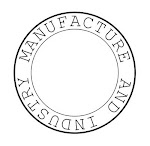In Walthamstow, East London, nestling among a warren of roads that feature a mix of terraced houses and new build flats are a set of industrial warehouses. They are the kind that you can see on the outskirts of most British towns and cities.
Clad in brown corrugated iron, with little clue as to what occurs inside, the premises of Alfred Dunhill are as modest as those that you might expect a double-glazing warehouse to occupy.
For this visit I am accompanied by Robin Mellor, a photographer who has a great eye for capturing the beauty of craft and the people behind it. It turns out to be the perfect visit for us both, as the craftsmen and women of Alfred Dunhill are an outgoing group who are at ease both in conversation and in front of the camera (several of them had been in a studio the day before to have their portraits taken for ‘a book’. Clearly, there is great interest in them and what they do at present.)
 Steve, the factory manager welcomes us to the factory and shows us around the raw materials store. We learn how the ordering system works. With the bespoke nature of much of Alfred Dunhill’s leather goods, some stock items can take up to six months to come in.
Steve, the factory manager welcomes us to the factory and shows us around the raw materials store. We learn how the ordering system works. With the bespoke nature of much of Alfred Dunhill’s leather goods, some stock items can take up to six months to come in.
“We’re using products which are raw, natural materials. We use the skin of a cow, a by-product of the meat industry,” Steve explains. “We use vegetable tanned skins. We get ours tanned in Belgium now. The cattle there are slaughtered at around 18 months. They use cattle from around Scandinavia as they believe them to be better quality – there’s no fences so you get less marking from barbed wire.”
We move to the scanning table where Steve shows us how a skin is measured. With just 5% of the skin being up to scratch for Alfred Dunhill’s products, it is a meticulous process.
Alfred Dunhill’s standards are exacting. Other companies will use a lot more of the leather that they buy in, but here, if it doesn’t match the lofty requirements it is not used.
 “You’re familiar with the saying ‘dressed to the nines’?” Steve asks us, “That was brought about by the fact that if you wanted a really good suit it’d take nine yards of material to make it. But you could make a suit out of two yards. That’s the difference here too.”
“You’re familiar with the saying ‘dressed to the nines’?” Steve asks us, “That was brought about by the fact that if you wanted a really good suit it’d take nine yards of material to make it. But you could make a suit out of two yards. That’s the difference here too.”
We’re left wondering what happens to the waste leather. It gets scrapped. We’re told that the pieces are so small they would not be of use to anyone.
Next we hear about the initial stages of making a product. Two samples are made of each item that is produced. One goes to Alfred Dunhill HQ, the other stays in the factory for reference. “Because of the amount of different products we make, and that we make very small quantities of them, we might make some now and some again in six months time, in that time you’ll have forgotten what it looks like,” Steve explains.
 Looking up at the shelves, there are lots of solid looking wooden boxes. Steve tells me that they are used to cover when building attaché cases. “There is a minimum order of ten of those wooden boxes. We might only want one. It’s a bit of crazy situation but that’s how we’ve ended up with a load of them.”
Looking up at the shelves, there are lots of solid looking wooden boxes. Steve tells me that they are used to cover when building attaché cases. “There is a minimum order of ten of those wooden boxes. We might only want one. It’s a bit of crazy situation but that’s how we’ve ended up with a load of them.”
“It’s the same with leather. We get an order come in and we need a hundred square foot. The tannery won’t sell us a hundred square foot, it’s a minimum of three hundred square foot. We end up with a load of different colours on the shelf. That could be left here for ages.” Clearly, these are the lengths that a luxury brand has to go to.
 Before moving out of the raw materials store Steve tells us about the difference in English and Belgian leathers. Bridle leather was the original leather that Alfred Dunhill would use in producing its items. Over time, a whiteness (called ‘bloom’) appears on the hide. “When they tan bridle leather they use lots of fats and oils so that they make it waterproof. What happens is that the white keeps coming to the surface. If you keep brushing it it comes back to its original colour again,” Steve tells us.
Before moving out of the raw materials store Steve tells us about the difference in English and Belgian leathers. Bridle leather was the original leather that Alfred Dunhill would use in producing its items. Over time, a whiteness (called ‘bloom’) appears on the hide. “When they tan bridle leather they use lots of fats and oils so that they make it waterproof. What happens is that the white keeps coming to the surface. If you keep brushing it it comes back to its original colour again,” Steve tells us.
-
All photos by Robin Mellor

